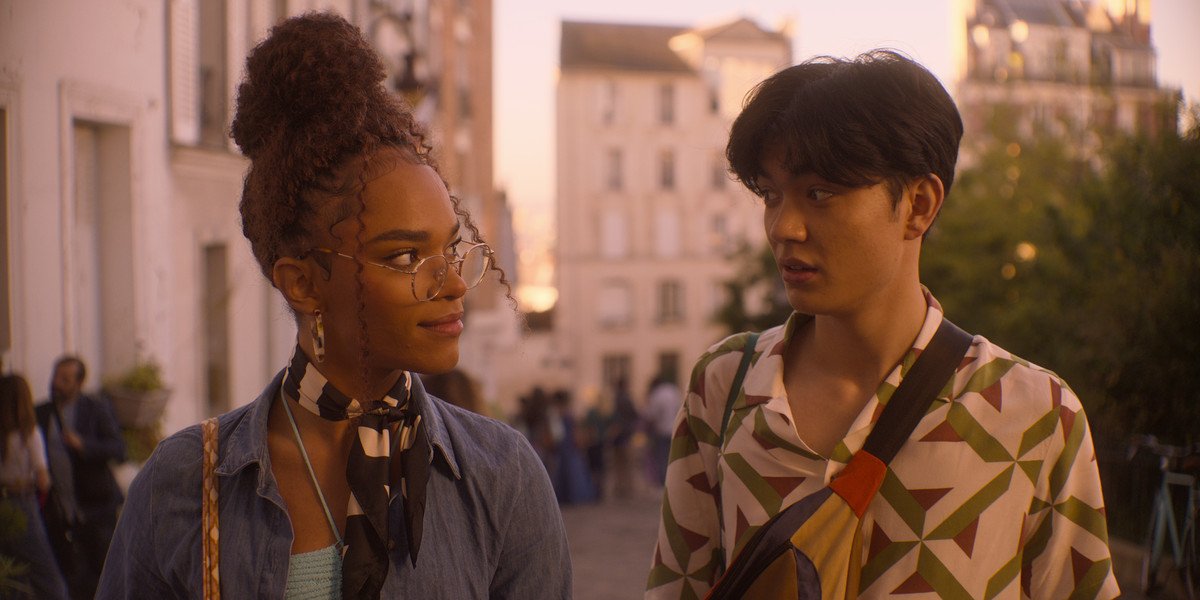Heartstopper’s first season only briefly gestured at Charlie’s disordered relationship with food. There were small moments that webcomic fans could recognize — Charlie picking at his breakfast cereal or barely finishing his meal at a family dinner. Season 2, on Netflix Aug. 4, brings these details to the fore, following with author Alice Oseman’s source material; Heartstopper volumes 2 and 3 dig deeper into Charlie’s long-term trauma from being bullied, among other heftier topics.
It might feel like a hard veer for a show praised for being so optimistic, hopeful, and lovely. And yes, Heartstopper is still lighter than teen dramas like Euphoria. But the show’s message of hopefulness made it easy to forget that season 1 also dealt with serious topics; Charlie is assaulted by a student in his class in the pilot and has to continue to go to school with him — a fact that hasn’t changed in season 2. This season plays the same difficult balancing act. As Netflix has already renewed Heartstopper for season 3, it feels like the show finally has more space to dwell on its uncomfortable and unresolved plot beats.
This season is dominated by Nick’s anxieties over coming out, Elle’s decision to transfer to an art school — which would once again pull her away from the friend group — and Tara and Darcy’s own growing pains as a couple. Through it all, Charlie and Nick remain Heartstopper’s emotionally earnest core. Charlie and Nick (and their entire friend group) act toward each other in good faith, even when they have no idea what to do, whether that’s interpreting their own feelings or coping with trauma. Their queer found family wraps even more tightly together in season 2 as more of them couple up. And they still speak to one another with a candidness that I could never have pulled off as a teenager.

Image: Netflix
Season 2 is also peppered with beloved romantic tropes that are the hallmark of satisfying “fluff.” A school trip takes the crew through Paris, where they head to the Louvre, throw parties in the hotel room, and play games of spin the bottle. There’s also the promise of “only one bed.” These episodes are some of the season’s most indulgent, with shared hotel rooms and day excursions that feel more dream than reality. But these moments are contrasted against scenes of homophobia in family life: In a climactic moment in season 2, one of the main characters sleeps in a park. Nick has to deal with his biphobic brother, intent on outing him to an absentee father. And Charlie struggles with his mental health — particularly with disordered eating.
The “wholesome” fantasy, then, isn’t that queer teens are spared from homophobia or transphobia — whether from classmates, the broader public, or their own families — nor is it that these students don’t have relationship struggles or mental health crises. Season 2 makes it clear that many of its main characters are struggling with long-term trauma and don’t really have the means to address it. But as the show digs deeper into these storylines, it continues to emphasize its more hopeful themes, like the power of a good support system made of friends, perhaps a well-meaning parent, and at least a couple of understanding teachers who will throw you a life jacket in turbulent waters.
Having such a support system is still powerful wish fulfillment for anyone who was ostracized or dealt with abuse at that age. (Even as so many of these characters have growing pains around learning that they can’t shield their loved ones from harm with sheer willpower alone.) It’s still hopeful, and hopelessly romantic. But season 2 is a more challenging, and more compelling, watch — especially if you’re mourning that isolated version of your teen self — even if love still prevails.























































